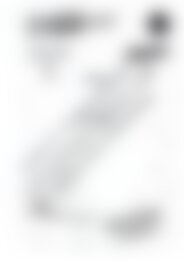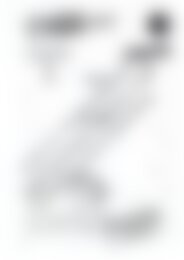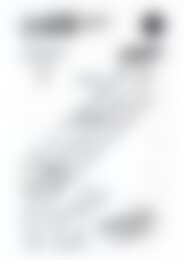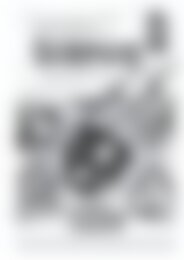RIC-20153 ACM Measurement and Geometry (Yr 3) Geometric reasoning
You also want an ePaper? Increase the reach of your titles
YUMPU automatically turns print PDFs into web optimized ePapers that Google loves.
Sub-str<strong>and</strong>: <strong>Geometric</strong> <strong>reasoning</strong>—GR – 1<br />
HANDS–ON ACTIVITIES<br />
• In this unit, students will mostly compare angles to the right angle (90°). This would involve recognising that a straight<br />
angle is two right angles (180°) <strong>and</strong> a full turn is four right angles (360°). Discuss the idea that right angles occur all<br />
around us, including the corners of pieces of paper, books, corners in rooms etc.<br />
• One method of introducing<br />
students to the idea of angles is<br />
to get them to (very carefully)<br />
trace the cutting edge of an<br />
open pair of scissors.<br />
• Students make an angle demonstrator (see page 77). They use these to show various angles such as 90°, an angle<br />
less than 90°, an angle greater than 90°, a straight angle <strong>and</strong> a full turn. Students find ways to record their results. Play<br />
games where the teacher (or a student) calls out an angle size (from the five mentioned above) <strong>and</strong> the students make<br />
that angle with their angle demonstrator <strong>and</strong> hold it up for the teacher to check.<br />
• Students make an angle unit measure that can be<br />
used as a non-st<strong>and</strong>ard unit. One version of this is to<br />
cut a sharp angle from a piece of cardboard. Allow the<br />
students to decide on how ‘pointy’ the angle is, but<br />
‘quite pointy’ would be the instruction. Students then<br />
use their angle unit measures to measure different<br />
angles. Note that as the students have each decided<br />
on the ‘pointiness’ of their angle unit measure, there<br />
will be a variation of results for the same measuring<br />
activity, as there is when measuring the length of a<br />
table using the non-st<strong>and</strong>ard unit of h<strong>and</strong> spans.<br />
• Another way to compare angles without a<br />
protractor is for students to make a different type<br />
of angle unit measure. This involves using a circle<br />
of light card. Students fold the circle in half, in half<br />
again, a third time, <strong>and</strong> finally a fourth time. When<br />
this is opened out, there are 16 equal (or very nearly<br />
equal) segments that become the units of the<br />
angle unit measure. Students then can use these to<br />
measure the size of angles in terms of the number<br />
of segments needed on their angle unit measure.<br />
Students may make the link to the fact that four of<br />
these angle unit segments make a right angle (90°).<br />
My angle demonstrator is showing a straight line, which is 180°.<br />
My angle unit<br />
measure<br />
©R.I.C. Publications<br />
Low Resolution Images<br />
Display Copy<br />
I needed 4 of my angle unit segments to be<br />
the same as the corner of my book.<br />
74 Australian Curriculum Mathematics resource book: <strong>Measurement</strong> <strong>and</strong> <strong>Geometry</strong> (Year 3) R.I.C. Publications ® www.ricpublications.com.au







